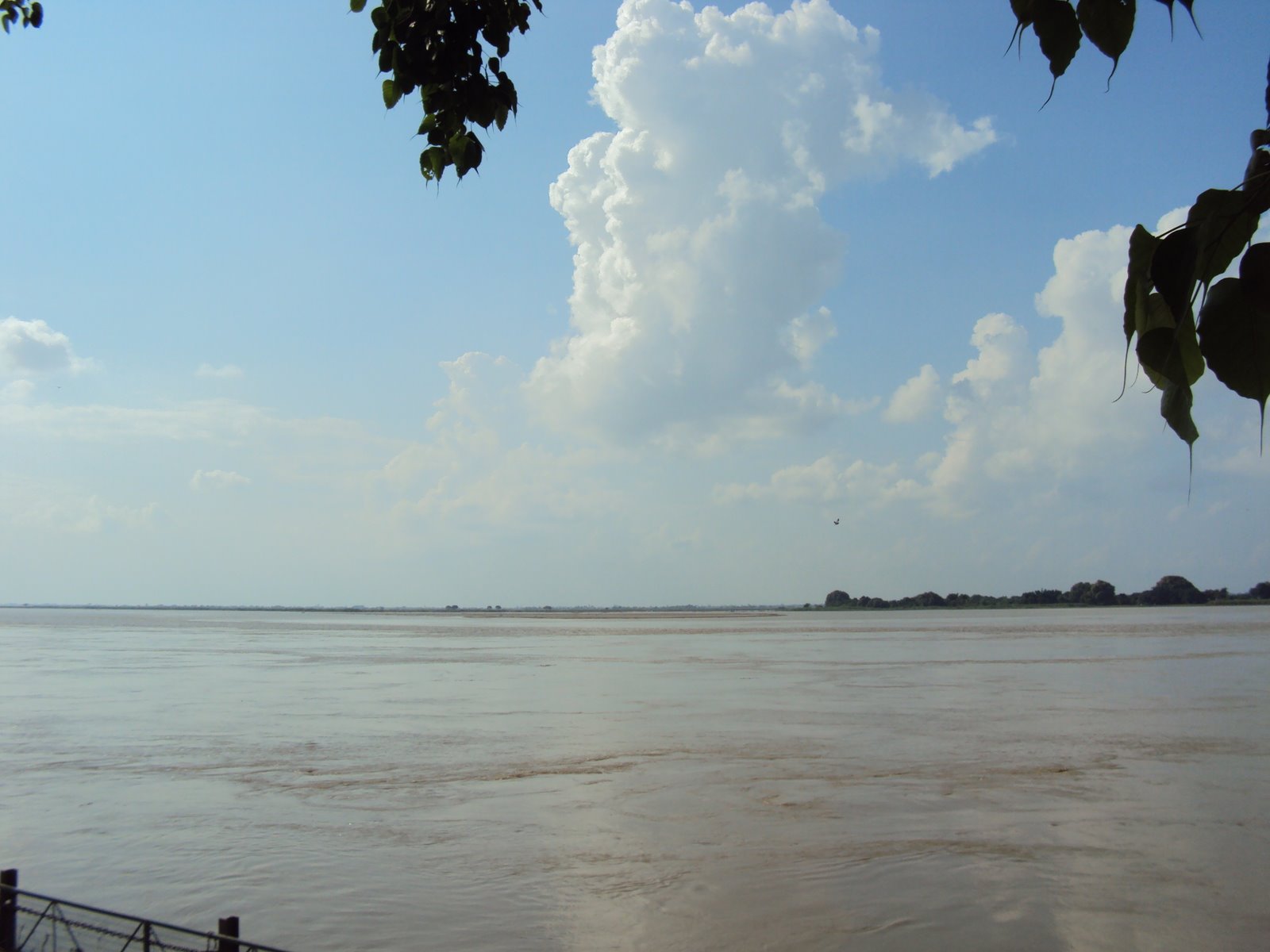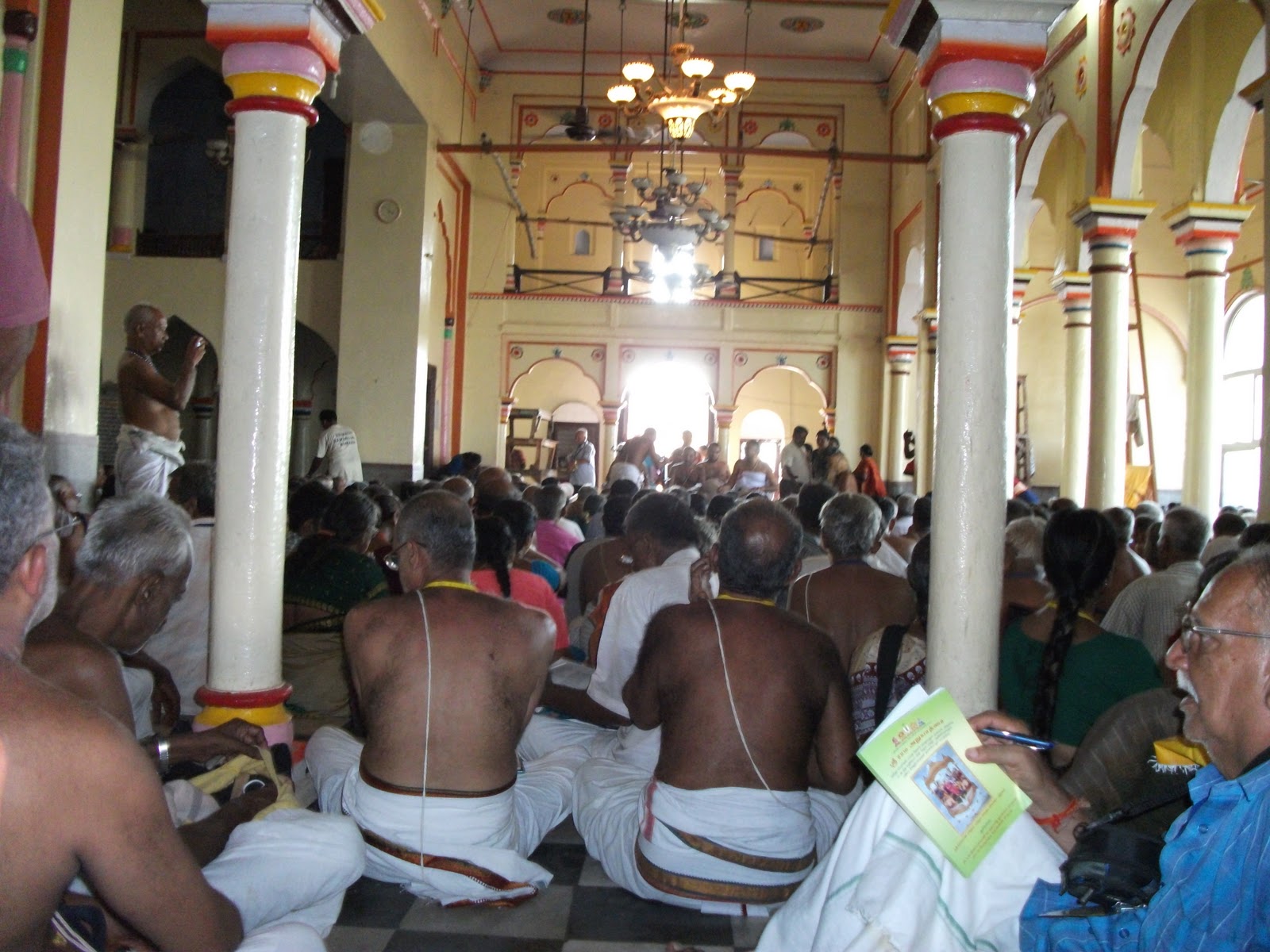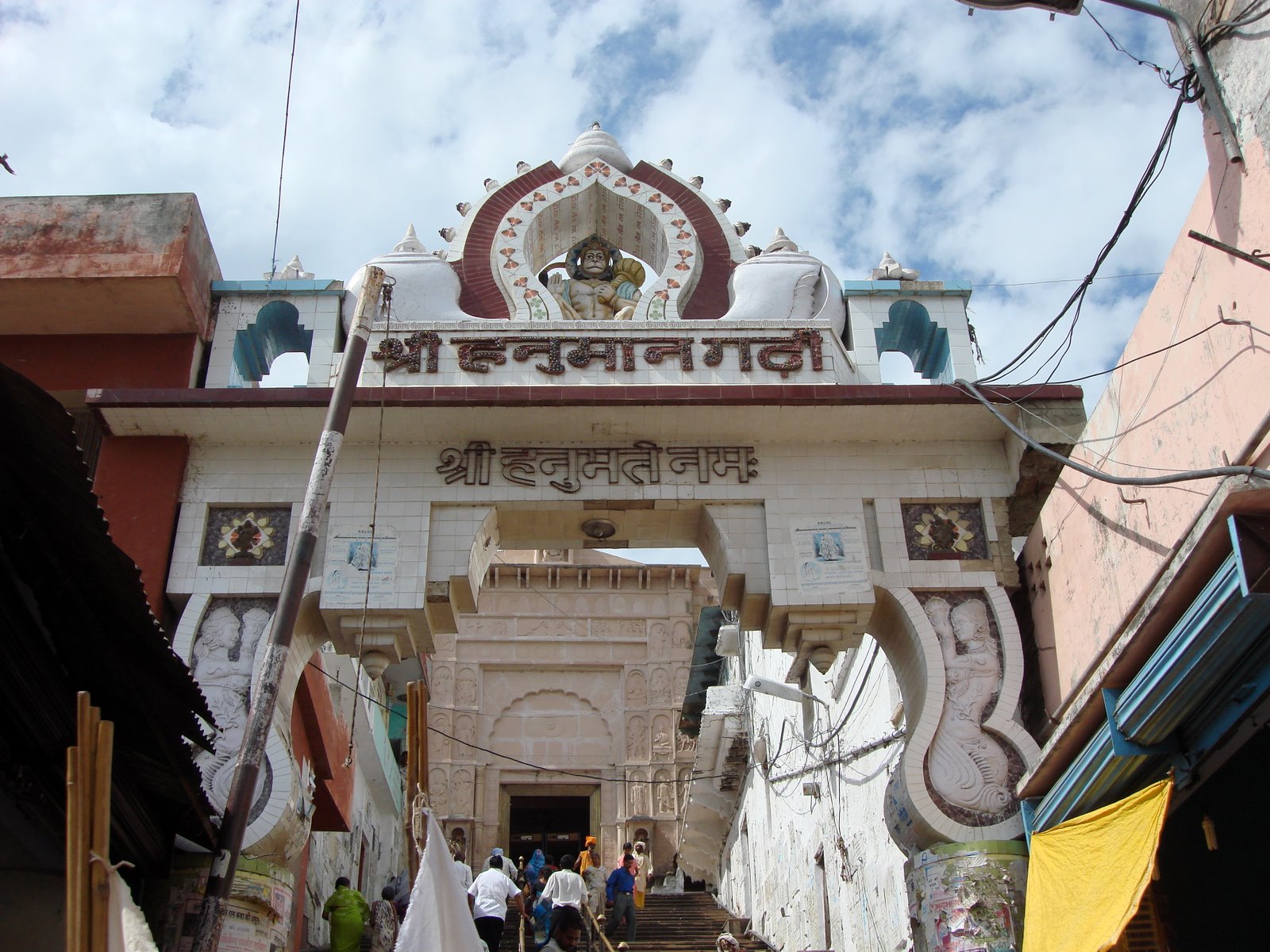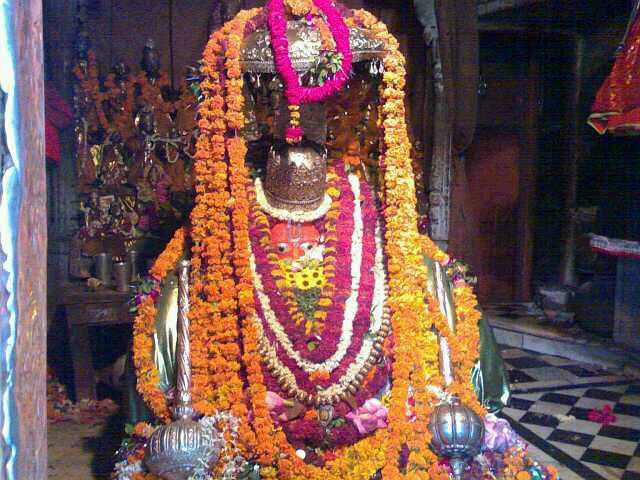
The sons of Kausalya and Kaikeyi were having timely food and sleep and were happily playing in their cradles. On the other hand, Sumitra’s sons were crying all the time, day and night, without even taking food. Sumitra became restless seeing the plight of her sons. When she mentioned this to King Dasaratha, he consoled her saying, “Everything happens according to God’s Will. Pray to Him. He will take care of the rest.” There was little he could do about it. Three days passed, the situation remained the same. Sumitra could no longer bear the suffering of the children. She went to sage Vasishtha and told him about her predicament. Sage Vasishtha closed his eyes. His Yogic vision enabled him to know the truth. He said to Sumitra, "As you partook of the sacred pudding given by Kausalya, you gave birth to Lakshmana who is an Amsa (part) of Rama. Similarly, Satrughna is born out of the share of pudding given to you by Kaikeyi. So, he is a part of Bharata. Put Lakshmana by the side of Rama and Satrughna by the side of Bharata. Then they will rest peacefully." Sumitra did as instructed by Vasishtha. The children became peaceful and stopped crying. Watching this, everyone heaved a sigh of relief. As the children grew up, it became very clear to Sumitra that Lakshmana was an Amsa (part) of Rama and Satrughna, an Amsa of Bharata. One day, she told Kausalya and Kaikeyi, "Dear sisters, your sons may ascend the throne of Ayodhya in future. I have no such ambitions. I am happy to see my sons being in the company of their elder brothers and serve them." Accordingly Lakshmana and Satrughna were always in the company of Rama and Bharata respectively. They served them and spent their time blissfully. King Dasaratha and the three queens were very happy to see such unity and harmony among their children.
Dasaratha and the people of Ayodhya were very happy at the birth of four princes. Dasaratha invited his guru sage Vasishta to perform the rituals for the period of the birth. Vasishta performed the sanctifying activities, and on the twelfth day Vasishta named all the off springs. Being a sage and thrikala darsi (knowing the future) He named all the children. He named Kausalya's son as Rama, because he was going to please everybody with his presence and behavior and Rama means Ramayathi Ithi Ramah (One who gives joy or one who attracts others). Sage Vasishta already knew who Rama was, and He was none other than Lord Vishnu, to whom the Rishis and Yogis pray in their hearts and experience bliss i.e. ramnthe asmin yo:ginaha ithi Rama, so he chose that name.
Kaikeyi's son was named as Bharatha, because he was going to take the responsibility of the whole kingdom. Bharatha means one who is capable to fulfill his responsibilities without expecting anything in return. The twins of Sumithra were named Lakshmana and Sathrughna.
Lakshmana means the wealthiest one. Vasishta knew that, HE is going to have the real wealth, i.e. constant service to (Lord) Rama (kainkarya Lakshmi), hence he was named Lakshmana.
And the last one Sathrughna, meaning one who is capable of destroying (eliminate) all His enemies. But actually in the whole Ramayana we can see that Sathrughna fought with and killed only Lavanasura. Then why was HE called as Sathrughna? Yes, here we are going to come across 2 kinds of enemies (with which we live daily, but don't realize). One is outer enemy like Lavanasura (outside beauty), and the second one, more dangerous enemies like desire, anger, jealousy, kama, moha etc. Sathrughna was able to serve only Bharatha by destroying both outer and inner enemies. That's why he was named as Sathrughna.
The flowers get importance from its fragrance and diamonds get importance from its sparkling brightness. An Diamond like Jeevatma gets its importance from being Seshatvam (being subservient). If an Jeevatma is not able to serve the lord, the atma looses worth and their is no point in telling Athma. Atma (soul) is different from the physical body and it is much more superior. Physical body is disposable and Atma is not. Body is made up of five essential elements. Atma is made up of Gnanam (Knowledge). Intelligent, understands Atma. Understanding Atma is not sufficient, one should have the feeling that he is the servant of Lord. Many people have served Lord Rama, in that list first comes Lakshmana. When Lord Rama goes on exile for fourteen years on the insistence of Kaikeyi, Lakshmana leaves his wife Urmila and joins Rama.

Lakshmanan is called in different names like Ilaya Perumal, Ilakkuvan. Sri Rama departed for Sri Vaikuntam with entire population of Ayodhya. Did Lakshmanan go along with Lord Rama, No Lord Rama followed Lakshmanan. When Lord Rama walked in the forest during the period of exile, Alwar sings this in below verse....
nerizaiyum iLangkovum pinbu poga evvaru nadanthanai emmi ramavo (Perumal Thirumozhi 9-2)
Lord Rama, Sita Devi and Lakshmana walking through the Dandakaranya forest in the order of Rama being in the front, Sita Devi in the middle and Lakshmana at the very end.
"agrata: prayayou Rama: Seeta madhye sumadhyama
prishthato tu dhanushpani; Lakshmano anujagama ha"

Sage Valmiki states the above verse. Lord Rama must have thought, for how long will Lakshmana follow me and my footsteps. For a change let me follow Lakshmanan. Probably that is the reason why Lakshmanan went to Vaikuntam first and then Rama followed him. Among the brothers, Lakshmana formed a special bond to Rama, Lakshmana was never there without Sri Rama. In Punarvasu, Rama's avatar, in Ashlesha Nakshatra Lakshman's avatar who was born after Lord Rama. Then, when did Sri Rama depart for Vaikuntam? And, when did Lakshmana leave for Vaikuntam? To know answer for this, we have come to Lakshman Ghat on the banks of Sarayu river. Lakshman wanted to welcome Rama in Vaikuntam and didn't want to stay in this earth without Rama so he went to Vaikuntam before Rama from Lakshman Ghat.



yatra yatra raghunatha kirtanam tatra tatra krita mastakanjalim
bhashpavari paripurna lochanam marutim namata rakshasantakam
Meaning: "We bow to Maruti, Sri Hanuman, who stands with his palms folded above his forehead, with a torrent of tears flowing down his eyes wherever the Names of Lord Rama are sung".
The above sloka gives us the significance of Lord Hanuman. In Ayodhya, we are in Hanuman Gaddi located on top of a small hillock with steep steps. Even today Lord Hanuman is revered by different names - Anjaneyar, Hanuman, Maruthi, Vayu Kumara, Vathathmajan, Sachivothama, Nava Vyakarana Pandithan (master of the nine sytems of grammar) and many more. Lord Hanuman is said to be here only, Didn't he leave along with Lord Rama to Vaikuntam.
When Sri Rama departed for Sri Vaikuntam, after His Avatar mission was over, He carried with Him entire population of Ayodhya. Purpa mudhal.... sung by Nammalvar, the verse goes as below...
purpA mudhalap pullerumbadhi onrinriye
narpal ayodhdhiyil vazhum characharam mutravum
narpalukku uyththanan nanmuganar petra nattule
Meaning: In the blessed Ayadhya, the land created by Brahma, -down to the meanest gross and insect without exception, he gives on exalted place to all the sentient and the insentient, so would any scholar study about a king other than Rama?
Lord Sri Rama showed us the simple way to achieve mukti (moksha). This is the quality of Lord Rama.
Goddess Parvati asks the Lord Parameshwaran:
"Keno payena laguna Vishnor nama sahasrakam|
patyate panditair nityam shrotumicchamyaham prabho."
Meaning: I desire to hear from my Lord the means by which scholars can read in an abridged (shorten) manner the thousand names of Lord Vishnu every day.
The answer is one of the most recited slokas:
"Sri Rama Rama Ramethi Rame Rame manorame
sahasranama thatthulyam Rama nama varanane."
The essence of the response is that the name of Lord Rama is equivalent to the thousand names.
Why is Rama Nama so famous, even though we have many other Thirunamam's (Thiru - word representing sacredness + Namam - name = The Sacred name. It represents the 'Sacred name of God') like Narayana Namam, Vasudeva Namam, Vishnu Namam etc. Because Lord Rama was the one who gave moksham i.e. vaikuntam to everyone in a simple way.
Sri Rama recognising Hanuman's great devotion, all the help he rendered in finding Sri Sita and in the war with Ravana, asked Hanuman to accompany Him to Vaikuntam. For this Hanuman replied that you might have seen many Sanyasis (Holy Men) who have abandoned the man asai (desire for earth), pen asai (desire for woman) and pon asai (desire for gold). Even Sanyasis will love to go to vaikuntam, but let me even abandon the desire for vaikuntam i.e moksham. By this, Lord Hanuman rejects the offer of Lord Rama humbly, which is stated in below verse...
"sneho me paramo rajan tvayi nityam pratishthitah |
bhaktischa niyata vira bhavo nanyatra gacchati ||
Meaning: "My mind does not seek anything except eternal and constant devotion to You; all I wish for eternal service-minded dedication to You".
After seeing Sri Rama's form, his eyes would not like to see anyone else, be He even the Sri Vaikunta Natha's form. If Hanuman desired to see Sri Rama, he would visit Ayodhya. Pleased with his reply, Sri Rama agreed for Hanuman to stay in this world and be singing and praising Sri Rama's names. From that time Hanuman is present at Ayodhya or Srirangam or Tirumala or Badarikshram or anywhere else and listens to Sri Rama's story.

This temple is constructed according to North Indian tradition. We can worship Hanuman inside. Full view of the idol may not be possible. Surrounding Hanuman his prakaram or corridor. There is an Yagnashala, where daily yagna is performed. Throughout the day, Hanuman is offered with different 'Bhog' [eatables]. Apart from fresh preparations, Hanuman is also offered eatables, which is procured from outside. These are returned to us as prasadam. Hanuman lived for a long time in Ayodhya - he is still living in Ayodhya.
Offering prayers to Sri Hanumanji of Hanuman Garhi of Ayodhya is almost equal to offering prayers to Sri Rama, himself. ‘thumhare bhajan ram ko pavai; janma janma ke dukha bisaravai’. Pray on to Him and get rid of all the dukha for ages to come.
Dasaratha and the people of Ayodhya were very happy at the birth of four princes. Dasaratha invited his guru sage Vasishta to perform the rituals for the period of the birth. Vasishta performed the sanctifying activities, and on the twelfth day Vasishta named all the off springs. Being a sage and thrikala darsi (knowing the future) He named all the children. He named Kausalya's son as Rama, because he was going to please everybody with his presence and behavior and Rama means Ramayathi Ithi Ramah (One who gives joy or one who attracts others). Sage Vasishta already knew who Rama was, and He was none other than Lord Vishnu, to whom the Rishis and Yogis pray in their hearts and experience bliss i.e. ramnthe asmin yo:ginaha ithi Rama, so he chose that name.
Kaikeyi's son was named as Bharatha, because he was going to take the responsibility of the whole kingdom. Bharatha means one who is capable to fulfill his responsibilities without expecting anything in return. The twins of Sumithra were named Lakshmana and Sathrughna.
Lakshmana means the wealthiest one. Vasishta knew that, HE is going to have the real wealth, i.e. constant service to (Lord) Rama (kainkarya Lakshmi), hence he was named Lakshmana.
And the last one Sathrughna, meaning one who is capable of destroying (eliminate) all His enemies. But actually in the whole Ramayana we can see that Sathrughna fought with and killed only Lavanasura. Then why was HE called as Sathrughna? Yes, here we are going to come across 2 kinds of enemies (with which we live daily, but don't realize). One is outer enemy like Lavanasura (outside beauty), and the second one, more dangerous enemies like desire, anger, jealousy, kama, moha etc. Sathrughna was able to serve only Bharatha by destroying both outer and inner enemies. That's why he was named as Sathrughna.
Lakshman Ghat:
The flowers get importance from its fragrance and diamonds get importance from its sparkling brightness. An Diamond like Jeevatma gets its importance from being Seshatvam (being subservient). If an Jeevatma is not able to serve the lord, the atma looses worth and their is no point in telling Athma. Atma (soul) is different from the physical body and it is much more superior. Physical body is disposable and Atma is not. Body is made up of five essential elements. Atma is made up of Gnanam (Knowledge). Intelligent, understands Atma. Understanding Atma is not sufficient, one should have the feeling that he is the servant of Lord. Many people have served Lord Rama, in that list first comes Lakshmana. When Lord Rama goes on exile for fourteen years on the insistence of Kaikeyi, Lakshmana leaves his wife Urmila and joins Rama.
Lakshmanan is called in different names like Ilaya Perumal, Ilakkuvan. Sri Rama departed for Sri Vaikuntam with entire population of Ayodhya. Did Lakshmanan go along with Lord Rama, No Lord Rama followed Lakshmanan. When Lord Rama walked in the forest during the period of exile, Alwar sings this in below verse....
nerizaiyum iLangkovum pinbu poga evvaru nadanthanai emmi ramavo (Perumal Thirumozhi 9-2)
Lord Rama, Sita Devi and Lakshmana walking through the Dandakaranya forest in the order of Rama being in the front, Sita Devi in the middle and Lakshmana at the very end.
prishthato tu dhanushpani; Lakshmano anujagama ha"
Sage Valmiki states the above verse. Lord Rama must have thought, for how long will Lakshmana follow me and my footsteps. For a change let me follow Lakshmanan. Probably that is the reason why Lakshmanan went to Vaikuntam first and then Rama followed him. Among the brothers, Lakshmana formed a special bond to Rama, Lakshmana was never there without Sri Rama. In Punarvasu, Rama's avatar, in Ashlesha Nakshatra Lakshman's avatar who was born after Lord Rama. Then, when did Sri Rama depart for Vaikuntam? And, when did Lakshmana leave for Vaikuntam? To know answer for this, we have come to Lakshman Ghat on the banks of Sarayu river. Lakshman wanted to welcome Rama in Vaikuntam and didn't want to stay in this earth without Rama so he went to Vaikuntam before Rama from Lakshman Ghat.

Sri Hanuman Garhi/Gaddi:
bhashpavari paripurna lochanam marutim namata rakshasantakam
Meaning: "We bow to Maruti, Sri Hanuman, who stands with his palms folded above his forehead, with a torrent of tears flowing down his eyes wherever the Names of Lord Rama are sung".
The above sloka gives us the significance of Lord Hanuman. In Ayodhya, we are in Hanuman Gaddi located on top of a small hillock with steep steps. Even today Lord Hanuman is revered by different names - Anjaneyar, Hanuman, Maruthi, Vayu Kumara, Vathathmajan, Sachivothama, Nava Vyakarana Pandithan (master of the nine sytems of grammar) and many more. Lord Hanuman is said to be here only, Didn't he leave along with Lord Rama to Vaikuntam.
When Sri Rama departed for Sri Vaikuntam, after His Avatar mission was over, He carried with Him entire population of Ayodhya. Purpa mudhal.... sung by Nammalvar, the verse goes as below...
narpal ayodhdhiyil vazhum characharam mutravum
narpalukku uyththanan nanmuganar petra nattule
Meaning: In the blessed Ayadhya, the land created by Brahma, -down to the meanest gross and insect without exception, he gives on exalted place to all the sentient and the insentient, so would any scholar study about a king other than Rama?
Lord Sri Rama showed us the simple way to achieve mukti (moksha). This is the quality of Lord Rama.
Goddess Parvati asks the Lord Parameshwaran:
patyate panditair nityam shrotumicchamyaham prabho."
Meaning: I desire to hear from my Lord the means by which scholars can read in an abridged (shorten) manner the thousand names of Lord Vishnu every day.
The answer is one of the most recited slokas:
sahasranama thatthulyam Rama nama varanane."
The essence of the response is that the name of Lord Rama is equivalent to the thousand names.
Why is Rama Nama so famous, even though we have many other Thirunamam's (Thiru - word representing sacredness + Namam - name = The Sacred name. It represents the 'Sacred name of God') like Narayana Namam, Vasudeva Namam, Vishnu Namam etc. Because Lord Rama was the one who gave moksham i.e. vaikuntam to everyone in a simple way.
Sri Rama recognising Hanuman's great devotion, all the help he rendered in finding Sri Sita and in the war with Ravana, asked Hanuman to accompany Him to Vaikuntam. For this Hanuman replied that you might have seen many Sanyasis (Holy Men) who have abandoned the man asai (desire for earth), pen asai (desire for woman) and pon asai (desire for gold). Even Sanyasis will love to go to vaikuntam, but let me even abandon the desire for vaikuntam i.e moksham. By this, Lord Hanuman rejects the offer of Lord Rama humbly, which is stated in below verse...
bhaktischa niyata vira bhavo nanyatra gacchati ||
Meaning: "My mind does not seek anything except eternal and constant devotion to You; all I wish for eternal service-minded dedication to You".
After seeing Sri Rama's form, his eyes would not like to see anyone else, be He even the Sri Vaikunta Natha's form. If Hanuman desired to see Sri Rama, he would visit Ayodhya. Pleased with his reply, Sri Rama agreed for Hanuman to stay in this world and be singing and praising Sri Rama's names. From that time Hanuman is present at Ayodhya or Srirangam or Tirumala or Badarikshram or anywhere else and listens to Sri Rama's story.
This temple is constructed according to North Indian tradition. We can worship Hanuman inside. Full view of the idol may not be possible. Surrounding Hanuman his prakaram or corridor. There is an Yagnashala, where daily yagna is performed. Throughout the day, Hanuman is offered with different 'Bhog' [eatables]. Apart from fresh preparations, Hanuman is also offered eatables, which is procured from outside. These are returned to us as prasadam. Hanuman lived for a long time in Ayodhya - he is still living in Ayodhya.
Offering prayers to Sri Hanumanji of Hanuman Garhi of Ayodhya is almost equal to offering prayers to Sri Rama, himself. ‘thumhare bhajan ram ko pavai; janma janma ke dukha bisaravai’. Pray on to Him and get rid of all the dukha for ages to come.


0 comments:
Post a Comment